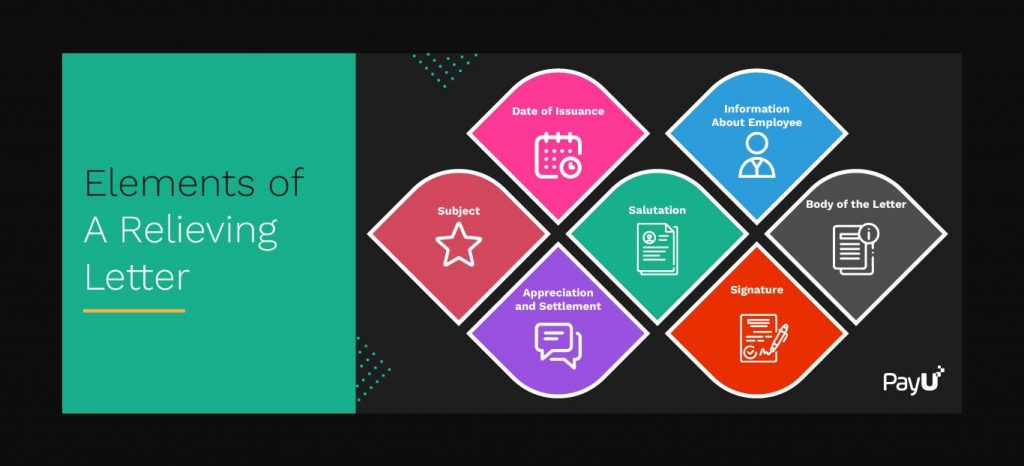Job switches are common in the corporate culture. However, whenever an employee shifts his job from one organisation to another, he must submit a relieving letter to the new organisation. What is a relieving letter, and why is it important to bag the new job? Let’s learn about the elements of a relieving letter and a relieving letter format!
What is a Relieving Letter
A relieving letter is issued by the ex-employer to the employee leaving the organisation, stating that the employee has been relieved from all the duties and responsibilities by the previous employer. It is issued after completing all the formalities and usually on the employee’s last working day in the earlier organisation.
Elements of a Relieving Letter
Following are the basic elements of a relieving letter format:

- Date of Issuance: The date of issuance of the relieving letter is important to ensure that it was issued by the organization at the time of the employee leaving the organization. This is to ensure that no future disputes arise.
- Information About Employee: Relieving letter contains all the information about the employee leaving the organization. It includes the name and designation of the employee.
- Subject: It briefly states the purpose of the letter.
- Salutation: It includes the recipient’s name (employee) preceded by a formal salutation. For example: ‘Dear Nick’ etc.
- Body of the Letter: This is the main component of the letter. It states the details about the employee, his designation and role in the organization, and the date from which the employee is being relieved from his duties and responsibilities. It also covers the date on which the employee rendered his resignation and, consequently, his last day in the organization. Further, it may also briefly include the employee’s performance during his tenure in the organization.
- Appreciation and Settlement: This section also forms part of the concluding paragraph of the body. It contains assurance about the full and final settlement of the dues payable by the employer. This is followed by the best wishes for the upcoming endeavours of the employee.
- Signature: The employer signs the relieving letter along with the seal of the organisation.
Key Points To Consider While Writing Relieving Letter
Before writing the relieving letter, you should keep the following points in mind:
- The relieving letter should be on the letterhead of the company
- Unless the employee provides a specific name of the recipient, the ideal salutation should be ‘To Whomsoever It May Concern.’
- Acceptance of the resignation of the employee should be mentioned in the letter. The designation of the employee should also be mentioned in the letter.
- The letter should be written in a polite and formal tone.
- The period for which the employee served the organisation (or the joining and leaving date) can be mentioned in the letter. Further, you can also acknowledge the service provided by the employee during his tenure of employment.
Why is Relieving Letter Important
A relieving letter is important because of the following reasons:
- It assures the future employer that the employee is available to join the organisation
- It acts as proof that both the employee and the employer have cleared all the dues pending against each other
- It acts as proof that the employee is not bound to the previous employer and has surrendered any data or property belonging to the previous organisation.
In a Nutshell
The relieving letter is an important formal document when an employee shifts his job from one organisation to another. Therefore, it is important to provide a properly crafted relieving letter to your employees to ensure that all the important terms have been considered and the employee can freely join another organisation. PayU has multiple relieving and resignation letter formats that you can use for your organisation. You can find a resignation letter template and the resignation letter word format here. In addition, you can also find an offer letter format, resignation letter sample, and relieving letter format.
FAQs
Yes. A relieving letter can be issued for a terminated employee as well. In such a case, the letter should mention the reason for the employee’s termination.
If you are not issued a relieving letter, you can ask your employer by sending a request mail to your organization’s HR. You can ask for any pending formalities to be completed and request a relieving letter.
Yes. Relieving letter is not a mandatory legal document and, therefore, an employer can deny issuing a relieving letter in case of specified reasons. However, it is always recommended to issue a relieving letter in other cases.
You can find the letter of resignation template on PayU. Along with relieving letter format, PayU also provides you with an offer letter sample and offer letter template, which serves as another important HR document.




